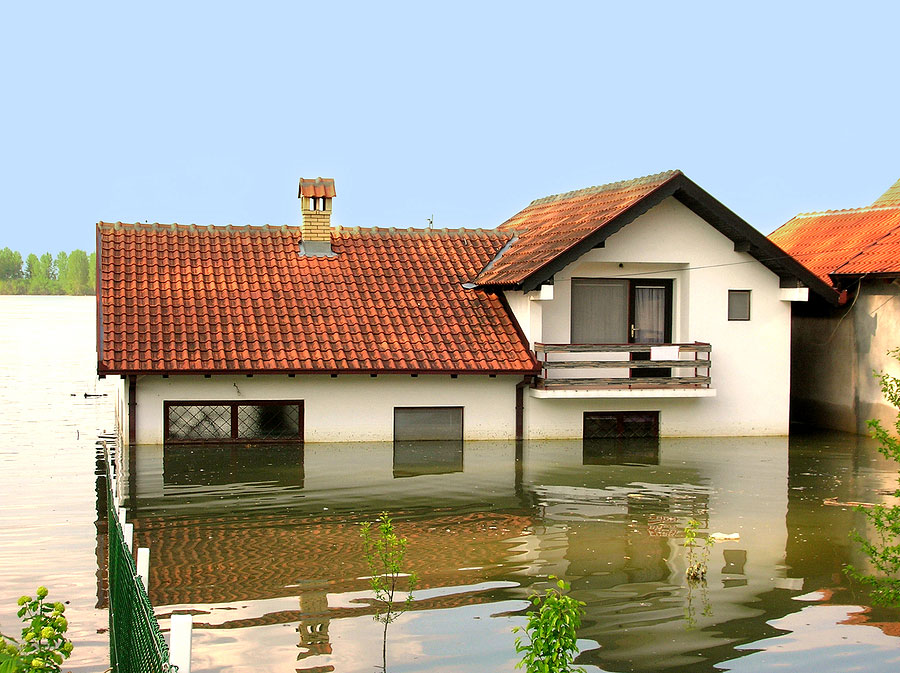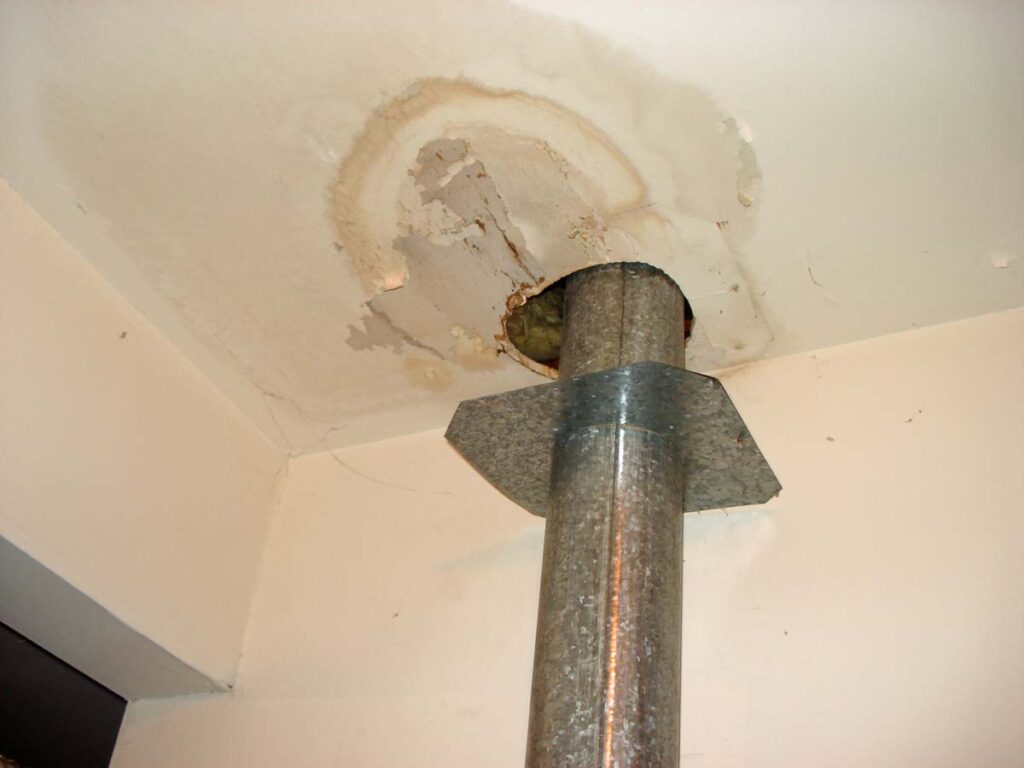It does not matter if the home is new or old, they all face the same challenges starting on day one. Nor does it matter the price range of the home. The three biggest challenges all Houston area homes face are water intrusion, foundation issues, and pest infestations. The value of the home will be significantly affected by homeowner maintenance over time and the quality of the home at the time of construction. Hiring a professional home inspector can help Houston home buyers avoid costly repairs that exist at the time of the home purchase. These are some of the most serious of home buyer mistakes.
Water Intrusion
Floods and Storm Surges
Water intrusion can be one of the most expensive repair situations a homeowner will ever face. The most common cases of water intrusion in the Houston area are floods and storm surges. Hurricane Harvey in August of 2017 was devastating. More than 250,000 were destroyed or severely flooded. Many homes had 3, 4, 5, and 6 feet of standing water for weeks. It was the wettest tropical storm in the history of the United States. Most of southeast Texas received over 40 inches of rainfall and some areas experienced 60 inches. It was also the costliest hurricane in history.
When a house experiences flooding of even a few inches it requires professional water remediation. Usually the affected sheetrock must be removed to expose the wooden studs and frame of the house. Large fans are used to accelerate the drying process. Then the wood must be treated to prevent any mold growth. Only after this process is completed can the walls be repaired and repainted.
Exterior Drainage
Usually a home builder will “grade” or build the house on a slightly higher elevation than the surrounding lot. The goal is for rainwater to drain into the street and then into the underground drainage system. However, sometimes the builder just did not properly prepare the surrounding land area or raise the foundation level. If the water does not drain away from the property then it will “pool” around the home foundation, causing soil compaction and “settlement”. The solution is to build a drainage system that will divert the rainwater away from the house and into the pre-planned drainage system for the neighborhood.
Incoming Water Lines
Fresh water is part of modern living but too much of it at the wrong place and the wrong time can be very costly. Many of Houston’s houses were built with galvanized iron pipes as the incoming water lines. Unfortunately galvanized iron pipes have several drawbacks. First, their lifespans are about 60 years and then they begin to experience pinhole leaks, which can create a lot of water damage in a short amount of time. Second, when temperature drop below freezing the water can freeze, expand, and crack the iron pipes. Once the temperature rises above freezing the ice will melt and leak through the crack at high pressure.
Waste Water And Sewer Lines
All waste water and sewer lines in the Houston area drain water away from the house with simple gravity. The water flows downhill at a slight angle to meet with the city’s larger drainage system. Homes without city drainage services utilize a septic tank system. Problems arise when cast iron or concrete waste water lines reach the end of their useful lives and collapse. Then the waste water and sewage will not drain or only drains at a much slower rate. When this happens water will accumulate under the home’s foundation, resulting in soil compaction and “settlement”.
Roof Leaks
Roofs tend to experience this water intrusion problem after about 20 years of age. Water will leak through the roof tiles and down the wooden roof structure. The water can leak directly into the ceiling or follow a path down the walls. Many times finding the source of the leak is difficult even for highly experienced roofers.
Air Conditioning Drip Pans
Many times home builders will locate part of the air conditioning system in the attic of a house. All of these systems will have to drain water that has condensed during the cooling process. The problem is that the builder fails to realize (or ignores) that over time the drip pan can overflow because the drain line is clogged with mold, dust, or other foreign objects. When the drip pan overflows it damages large sections of the ceiling and anything below, such as furniture and wood floors. The solution is to install a larger drip pan, a larger drain line, and to try and route it as vertically as possible to an outside exit or a larger plumbing drain line. One of the best solutions is to drain the drip pan into the same drain line that is used for the exiting washing machine water.
Moisture Penetration
Moisture penetration can have many sources and causes. Sometimes the exterior bricks become saturated with water. Sometimes the exterior “weep” holes are frequently “flooded” during heavy rain. Sometimes landscapers cover up the weep holes with dirt and new plants. And frequently mold is an associated problem with moisture penetration. Moisture penetration must be remediated or the problem and cost will become much worse.
Water Valves
Any place in the house that uses water should have a shut-off valve for the incoming water line. Every bathroom, kitchen, washing machine, etc. If there are no shut-off valves then install them. Usually this is only a problem with older homes.
There should also be shut-off value for the main water line that enters the house. Usually it is located next to one of the walls of the house. In emergencies there is another shut-off value that is located next to the city water meter for the house. Usually it is underground and a little digging is required to access the valve.
Do NOT Do This
There will always be water leaks. Do NOT remodel a house, put the washer and dryer on the second floor, and neglect to install a drain for any water leaks. It is bad design and poor foresight – and it happens. Any water leak can create significant damage to the 2nd story floor, the ceiling of the first floor, and anything under the ceiling.
Home Foundations
Most homes built in the Houston area in the past 70 years are built upon a concrete slab foundation. Earlier homes are usually built on a pier and beam foundation with the floor of the house above ground level. Pier and beam foundations have a crawl space between the ground and the underside of the house which allows easier access for water line repairs.
The overriding challenge for homeowners in southeast Texas and Houston is the soil composition. A large portion of soils in this part of the country are composed of clay, which presents formidable problems for any and every home foundation. The clay soils absorb water and expand when they are wet. When the clay soils lose moisture they shrink in volume. This continual process of clay soil expansion and contraction in volume is significant, so much so that it can crack concrete slab foundations.
Unfortunately for new home buyers in Houston, most concrete slab foundations are built to minimum standards and are often referred to as “minimally functional” foundations. Home builders are only on the hook for ten years for home foundation issues. After ten years all foundation problems are solely the responsibility of the homeowner.
Uplift
When there is significant clay soil expansion under the concrete slab foundation, cause it to rise in one area.
Settlement
When the clay soils have experienced a significant loss of moisture and shrink in volume. The clay soils literally shrink and “pull away” from the slab foundation, creating a void. When the void becomes to large the slab foundation will crack and “fall” until it reaches support (the shrunken soil).
Foundation Repair
Most foundation repair is temporary and will have to be repeated several times. Most foundation repair contractors use the inferior Pushed Pile repair method (stacked concrete cylinders) that is quick and profitable. A-1 Engineering calls these various Pushed Pile methods “useless and temporary”. The best foundation repair method utilizes Bell Bottom Piers because they are single unit construction, support much more weight, better resist uplift and settlement, and they are permanent.
Pests
Termites and ants can cause major damage to a home’s wooden structure. If a home has had periodic pest control treatments, and there is no visible sign of infestation, then the prospective home buyer can feel reasonably confident with the purchase. However, this situation of regular pest control maintenance does not happen that often.
The problem of pest infestation is extremely difficult to evaluate because almost all of the damage is behind a wall. The only way to view the damage is to tear out part or all of a wall. Attic infestation can also be difficult to discover because many of the roof joists are covered by insulation.


